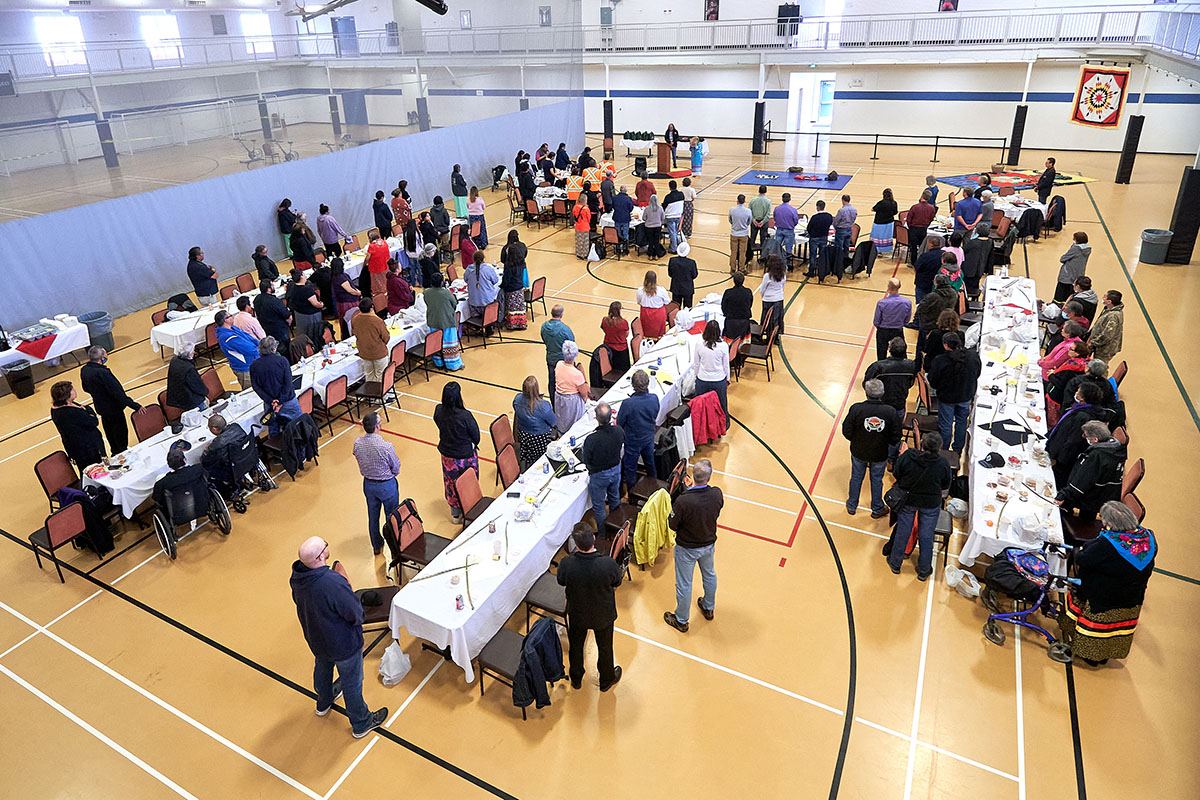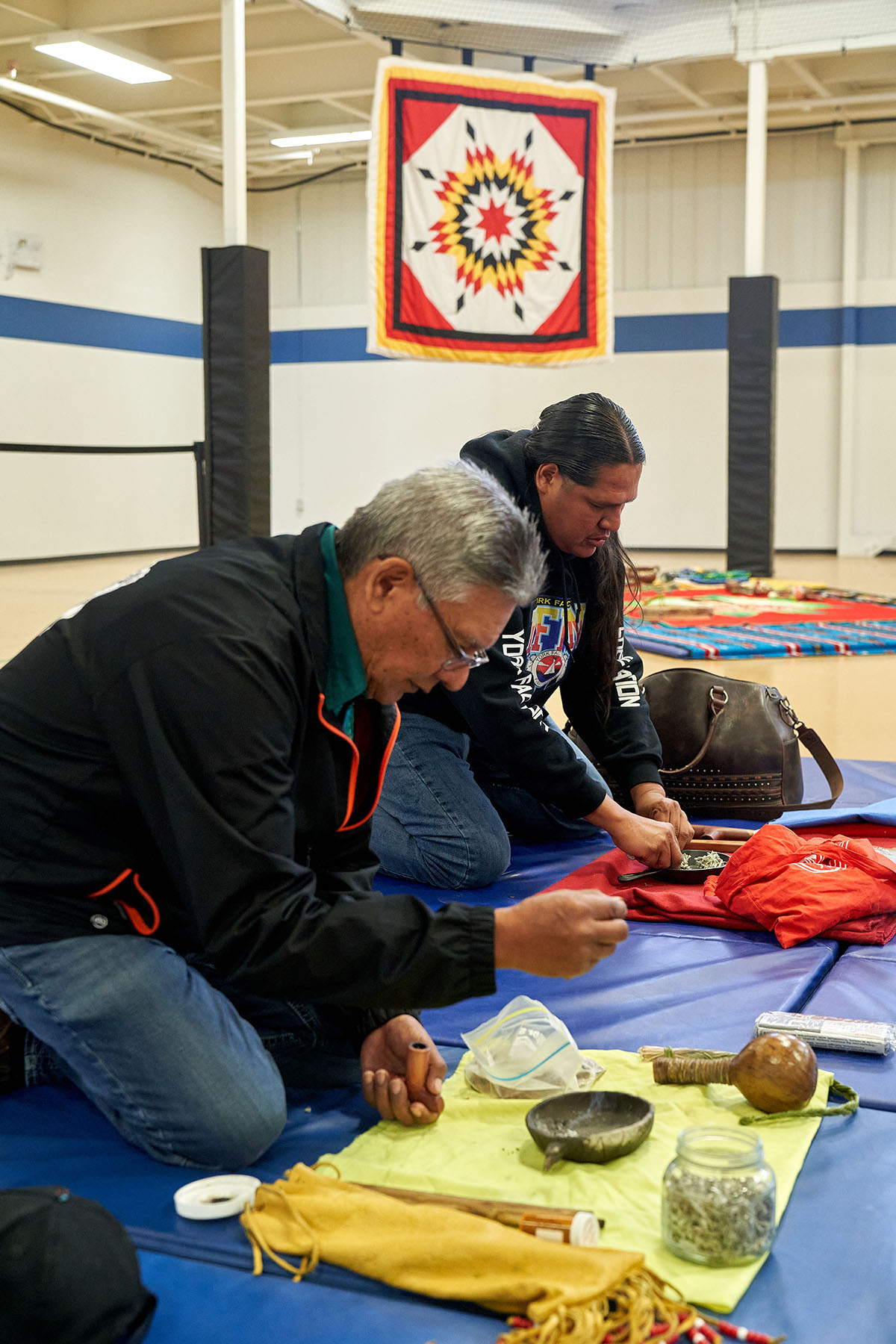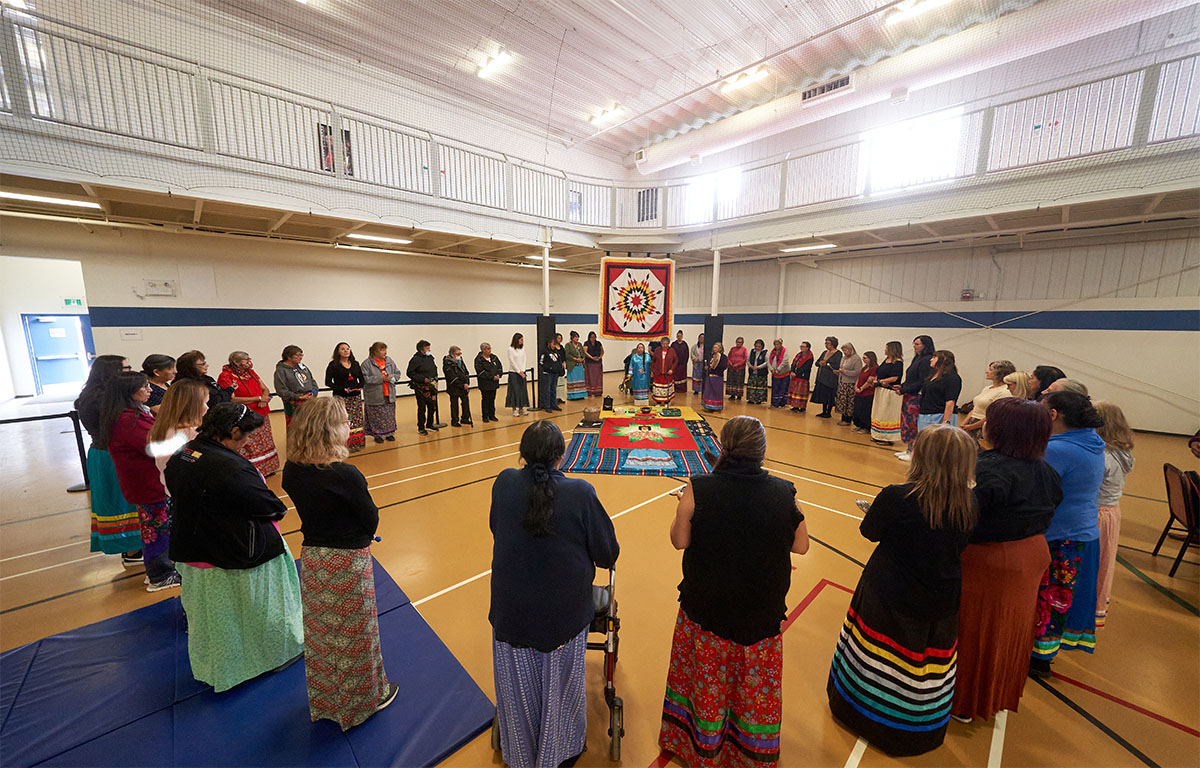Keeyask ceremony marks significant milestone; work on project continues
After months of organization, all the partners involved in building the Keeyask Generating Station were able to come together to acknowledge a major achievement. The Waciye Water Ceremony and Blessings was held at site on September 8, 2022.
All of Keeyask Generating Station’s generating units were brought online in March 2022, and it was important for the Indigenous partner communities and the project to hold a ceremony to acknowledge the effects and the changes made to the land. It was only possible six months later.
The Keeyask Generation Project is a partnership between Manitoba Hydro and the four Manitoba First Nations – Tataskweyak Cree Nation, War Lake First Nation, York Factory First Nation, and Fox Lake Cree Nation – working together as the Keeyask Hydropower Limited Partnership.
The day’s events included remarks from several Indigenous communities, Manitoba Hydro staff, and the Keeyask project manager; a hymn; an Indigenous pipe ceremony; a water ceremony; and a feast shared by all.


“The water ceremony, itself, was for all of the efforts of all the partners involved,” said Susan Kobliski, who led the ceremony. “But it is also for the people of the four nations, the territory, and the communities to acknowledge Keeyask as a whole community. This is one of the final stepping stones towards the last portion of the infrastructure of the station and we have to acknowledge the spirit of the water.

“It’s a ceremony for every part of the water, the earth, the animals … the winged ones, everything that is alive and how it has been affected; encouraging us to stay focused on what it is that continues to flow: the water, the seasons.”
While all seven units are now capable of providing green, reliable hydropower to domestic customers, one unit still needs to go through complete testing and certification to allow it to enter commercial service. Commercial service certification allows Manitoba Hydro to include the generators’ output for export sales in commercial contracts.
Even with the generation units online, there is still work to be completed in the powerhouse on final mechanical and electrical infrastructure.
Demobilization – the work to take apart structures used for things like offices, water treatment, and other project support – is also continuing. The major piece of demobilization still to be accomplished is deconstructing the site’s camp and shipping it offsite.
A part of the project that has commenced, but has significantly more work ahead, is re-vegetating areas used during the construction phase, including work areas, excavation sites, and areas used to support the project.
This involves de-compacting ground that was compressed in the used areas, reshaping the surfaces, and planting native vegetation to allow disturbed areas to return to nature over time.
In all, around 18 months or more of all work remains before the project can be considered complete.
And once this is all done, environmental monitoring work will continue for many years to come.
